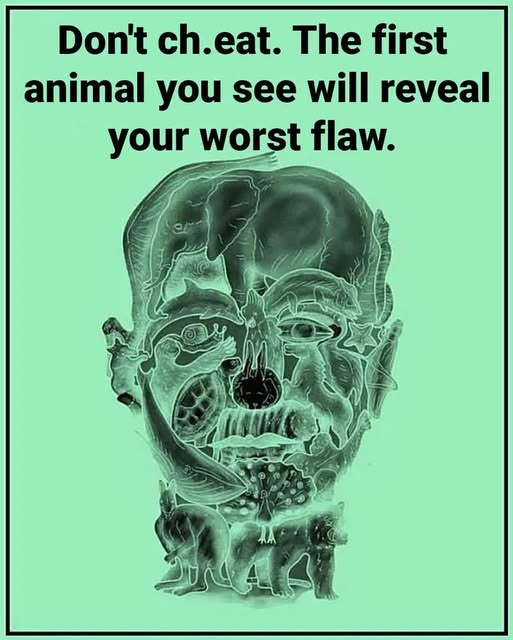This visual test reveals your ‘worst flaw’ based on the first animal you see

An image circulating widely on social media claims to reveal your worst flaw based on the first animal you see. The illustration initially resembles a human face but contains numerous hidden animal figures. Viewers are encouraged to glance quickly and identify the first animal they notice—supposedly revealing a key personality flaw. Though these visual personality tests lack scientific backing, they’ve gained popularity for their entertainment value and ability to spark conversation.
The test works by prompting observers to look at the image briefly and naturally note the first animal they recognize. Each animal is linked to a specific character trait:
- Elephant – stubbornness
- Iguana – emotional aloofness
- Pig – indulgence
- Cricket – anxiety
- Horse – pride
- Dolphin – impulsiveness
- Bear – rigidity
- Fox – avoidance
More animals and their symbolic flaws include:
- Rabbit – insecurity
- Toucan – need for attention
- Kangaroo – inconsistency
- Peacock – vanity
- Turtle – excessive caution
- Whale – emotional isolation
- Gorilla – dominance
- Duck – mood swings
- Starfish – escapism
- Snake – manipulation
- Sloth bear – procrastination
- Bird – instability
- Snail – resistance to change
These attributions are meant to be light-hearted and provoke reflection or laughter—not serve as real psychological diagnosis.
The appeal of these tests lies in their simplicity, the element of surprise, and the social interaction they inspire. They’re easy to share and fun to discuss with friends. Many people are naturally curious about how small visual cues might “reveal” hidden truths about themselves—even if it’s all just in good fun.
Ultimately, while these tests don’t offer genuine psychological insight, they’re harmless fun when approached with a sense of humor. They can spark a moment of introspection or simply a laugh with others. Real personality and growth are far more nuanced—but if this viral illusion encourages self-reflection or social bonding, then it’s doing something positive in its own quirky way.





